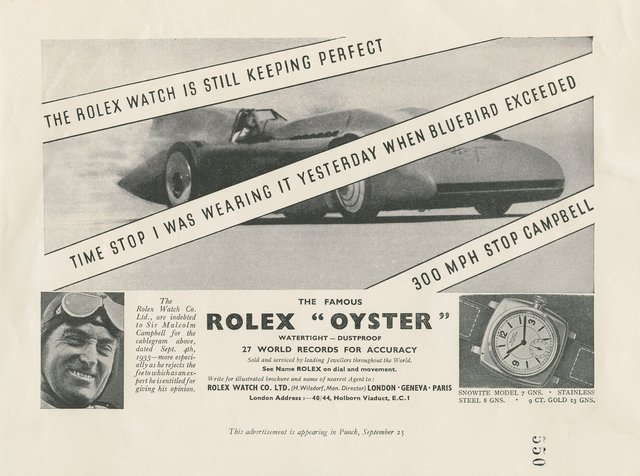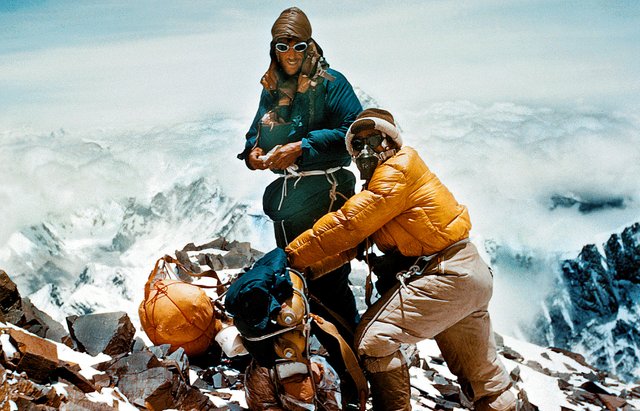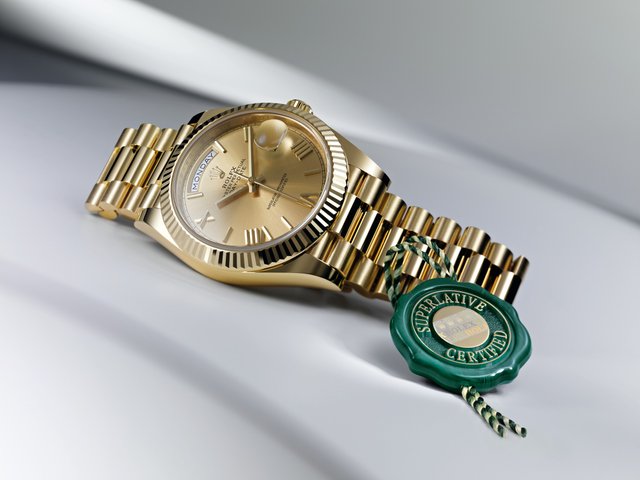
Rolex wristwatches have embodied a simple elegance and timeless prestige, becoming the partner of choice for some of the greatest explorers, achievers and leaders of the past century.
Season to season, collection to collection, fashion is an industry built on inherent change. Some of its key players, however, have built lasting brands on the exact opposite.
Precision, consistency and reliability are what makes Rolex and its rotors tick. For over a century, Rolex watches have accompanied some of the world’s most daring explorers and ambitious achievers, from the top of the highest mountains to the deepest reaches of the ocean. With an unmatchable combination of timeless design, unsurpassed quality and groundbreaking innovation, it’s no wonder some of the 20th century’s most influential figures, from Pope John Paul II to Mao Zedong to Fidel Castro, have basked in the spotlight embodying the prestige of a Rolex wristwatch.
The roots of Rolex can be traced back to 1905, when a 24-year-old Hans Wilsdorf, noticing a dramatic shift in dress codes and lifestyle attitudes, founded “Wilsdorf and Davis” in London specializing in the distribution of timepieces. Wilsdorf’s perceived that soon, the masses would prefer wristwatches to pocket watches. At the time, however, wristwatches were not very precise at all and Wilsdorf’s visionary spirit envisioned that wristwatches could not only become elegant, but also a reliable everyday necessity.
The first mandate of concentration was centred on the quality of the movements, a relentless quest for chronometric precision. In 1910, Wilsdorf had the first wristwatch in the world to receive the Swiss Certificate of Chronometric Precision, granted by the Official Watch Rating Centre in Bienne. By 1914, Kew Observatory in Great Britain awarded the company a class “A” precision certificate distinction. From that date forward, the Rolex wristwatch had become synonymous with precision.
After moving to Geneva and adopting the Rolex name, a Swiss city renowned for its watchmaking scene, Rolex began to take large strides in innovation, including the creation of the first waterproof and dustproof wristwatch (the Oyster) and the perpetual rotor self-winding mechanism, an ingenious system that today is found at the heart of every modern automatic watch.
This was put to the test the following year in 1927, when a young English swimmer named Mercedes Gleitze crossed the English Channel wearing a Rolex Oyster. After the 10 hour swim, Gleitze came out on the other side with the glistening watch in perfect working order. Only a few years later would the crew taking on the world’s first expedition to fly over Mount Everest be equipped with the same Rolex Oysters, with its members highly satisfied with the precise performances of the watches.
Recognizing the formidable opportunity to test, fine-tune and showcase the brilliant technical performance of the Oyster in different arenas, the worlds of sport, aviation, motor racing and expeditions came to constitute living laboratories for the cutting-edge technical attributes of the watches.
Sir Malcolm Campbell, one of the fastest drivers in the world in the 1930s, was united with Rolex in the quest for speed. Wearing a Rolex watch, the “king of speed” set a land speed record of over 300 miles per hour (485 km/h) at Bonneville Salt Flats in Utah. Sir Malcolm broke the world speed record nine times between 1924 and 1935, including five times at Daytona Beach in Florida.

SPEED RECORD, MALCOLM CAMPBELL, 1935
“I have now been using my Rolex Watch for a while, and it is keeping perfect time under somewhat strenuous conditions,” Sir Malcolm Campbell once stated.
By the mid-century mark, Rolex had developed a number of professional watches that served as tools and whose functions went far beyond simply telling the time. These watches were intended for professional activities, such as deep-sea diving, aviation, mountain climbing and scientific exploration. The watches generated lasting enthusiasm and became known as the watches of achievers, the perfect partner on land, under water, or in the air.
The creation of the Rolex Datejust, the first self-winding wrist chronometer to indicate the date in a window on the dial, became one of great distinction. It was also the first watch with a date that changed automatically. Equipped with a Jubilee bracelet created specifically for it and a fluted bezel, the sight of it was immediately recognizable as a Rolex and the pillar of the Oyster collection.

EVEREST 1953. ©Alfred Gregory/Royal Geographic Society.
Sir John Hunt’s 1953 expedition, which Sir Edmund Hillary and Tenzing Norgay reached the summit of Mount Everest was equipped with Oyster Perpetuals. Inspired by the knowledge gained from this fascinating chapter of human adventure, the Oyster Perpetual Explorer launched in 1953 to celebrate the victorious ascent, immediately acquiring iconic status almost overnight.
The Submariner was born the same year as the first divers’ watch waterproof to a depth of 100 metres (330 feet). Its rotatable bezel allows divers to read their immersion time. In 1960, the experimental bathyscaphe, the Trieste successfully descended into the world’s deepest known depression on the Earth’s surface. With Lieutenant Don Walsh at the helm, accompanied by Jacques Piccard, the Treiste accomplished a feat so incredible that it forever raised the bar for deep-ocean exploration. Rolex’s experimental watch “Deep Sea Special” emerged from 19,916 metres (37,800 feet) in perfect working order, attached outside during the historic dive.
As intercontinental travel developed in the 1950s, airliners began to fly swiftly across several successive time zones. For the first time it became important to know the time in various places in the world, simultaneously. It was the dawn of the jet age and Rolex responded with a watch to match the spirit of the times – the GMT Master. Developed to meet the specific needs of the airline pilots, it became the official watch of several airlines, among them Pan American world Airways, better known as Pan Am. The most distinguishing visual feature was the two-tone bezel, which marked daytime from nighttime hours.

COSMOGRAPH DAYTONA ‘PAUL NEWMAN’ DIAL
As the Daytona International Speedway was rapidly becoming the most prestigious endurance car races in the world, a new-generation chronograph, the Cosmograph soon gained the name that became the mark of an icon: Daytona. The Cosmograph Daytona proved to be the ultimate tool for endurance racing drivers, as a robust and waterproof model that also featured a tachymetric scale on the bezel for calculating average speed.
As Rolex watches continued to grow, it gradually came to be associated with leadership and those who have guided the destiny of the world. No matter their vision, their domain of excellence, or their achievements, the one thing these exceptional men and women have in common is often their watch: the Day-Date.
In 1956, the Oyster Perpetual Day-Date made its debut, available only in 18 ct gold or platinum, it was the first wristwatch to display the date and day of the week spelt out in a full window on the dial. With the President bracelet, originally created specifically for it, the Day-Date continues to be the watch par excellence of influential people. Fidel Castro supposedly wore his Day-Date as a way to keep track of time in Havana and Moscow simultaneously.

DAY-DATE 40
More recent models like the Oyster Perpetual Yacht-Master, tied the knots between Rolex and the sailing world. Yacht-Master II was the first watch in the world equipped with a programmable countdown with a mechanical memory. This unique watchmaking complication consists of an innovative system of interaction between the movement and the case thanks to a rotatable ring command bezel designed and developed by Rolex. This regatta chronograph allows yachtsmen to cross the line as soon as possible after the starting gun.
Continuing well into the second millenium, Rolex continued to stand as a symbol of timeless elegance and unbeatable functionality, making it a much admired symphony of simplicity.
Rolex is not the world’s oldest watchmaker. Nor is it the most grandiose. However, Rolex has come to define what timeless, precision and simplicity really mean. It grants owners a look of sophistication and prestige, plus the utility of an functional timepiece, a marriage you would be hard-pressed to find to this day.
Words by Braeden Alexander – Discover Rolex.
Posted from my blog with SteemPress : http://lyfstyl.ca/how-rolex-became-the-most-classic-of-timepieces/